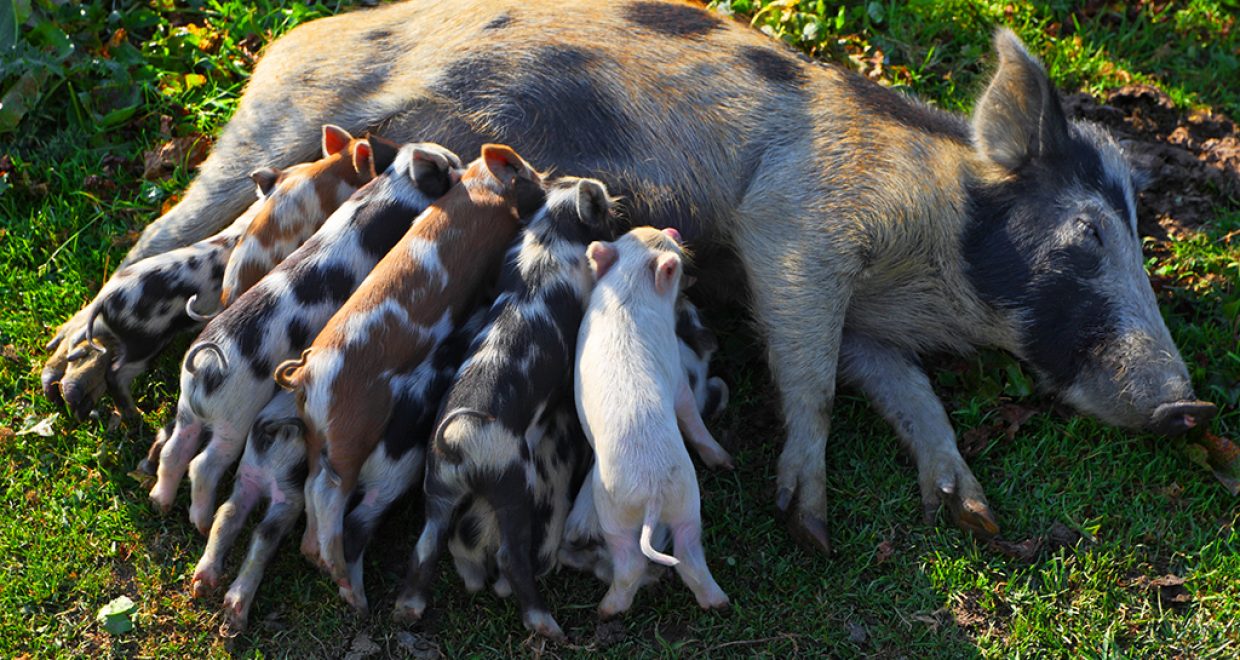Body mobilization and feed intake in hyper-prolific sows – increased focus on nutrient and energy intake
The animal article of the month for November is ‘Sows with high milk production had both a high feed intake and high body mobilization‘.
Modern sows give birth to a higher number of piglets than earlier and therefore also have to nurse and wean more piglets. Consequently these hyper-prolific sows have a higher milk production when nursing 12-14 piglets compared to sows nursing smaller litters. A high milk production increases the requirement for energy and nutrients in order to meet the demand of the piglets. Research has shown a positive relationship between the feed intake of the sow and the milk production. The milk production has a very high priority for the sow and therefore sows often turn catabolic during lactation. The sows mobilize from body reserves to maintain a high milk production, because they are unable to increase the feed intake at the same rate as the increase in milk yield. In addition, the sows also have an upper physical limit for how much feed they can ingest. The degree of mobilization during lactation varies considerably between sows and different studies, and it is unclear how the body mobilization is linked to the feed intake and milk production of the sow. It is especially interesting to investigate these relationships in hyper-prolific sows, because these sows mobilize more from their body than sows nursing fewer piglets, and a high body weight loss can have a negative effect on the following reproductive cycle.
Therefore the aim of this study was to characterize the hyper-prolific sows in particular in relation to the interplay between feed intake, body mobilization and milk production. The study showed that the sows with the highest litter gain and thereby also the highest milk production were the sows with both a high feed intake and a high body weight loss. This emphasizes the importance of improving the feed intake of the sows to avoid excessive body weight losses. However, since the sows might be close to the upper limit for feed intake, future research should also focus on optimizing dietary energy and nutrient concentrations of lactating sows. By looking at different periods of the lactation period it was shown that litter gain was highest in the second week of lactation and that the body mobilization was highest during the first two weeks. The high mobilization in early lactation is the result of a peak in milk production just before the sows reach their maximum feed allowance. This confirms that the highest potential for optimizing feed intake or nutrient concentrations to minimize body mobilization is in the first weeks of lactation.
This article is freely available for one month: ‘Sows with high milk production had both a high feed intake and high body mobilization‘.
Authors: A. V. Strathe, T. S. Bruun, C. F. Hansen
The animal Article of the Month is selected by the Editor-in-Chief and is freely available for one month. View the recent selections






